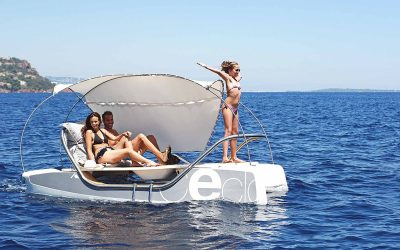The maintenance of nautical equipment is often underestimated, yet it is crucial to ensure the longevity and proper functioning of vessels. When used intensively in particularly harsh environments, rigorous maintenance becomes even more essential. This is especially true for vessels operating in saltwater, exposed to salt spray, or those used for rental purposes. Such environments impose high technical requirements and require appropriate monitoring to prevent failures and maintain equipment quality.
The different types of nautical equipment maintenance
To optimize the lifespan and performance of nautical equipment, regular maintenance is necessary. This maintenance can be categorized into three main types: cosmetic maintenance, mechanical maintenance, and electrical maintenance.
1. Cosmetic Maintenance : Cosmetic maintenance mainly concerns the appearance and protection of the external elements of the vessel. This type of upkeep includes cleaning and protecting the waterline, deck, and ergonomic accessories such as seats, control levers, and pedals. In saltwater, the risk of corrosion and material wear is significantly higher, making proper maintenance of these parts crucial. Regular cleaning prevents salt, moisture, and debris from causing permanent damage to these components, which can affect not only aesthetics but also the safety of the equipment.
2. Mechanical Maintenance : Mechanical components are at the core of a vessel’s proper operation. Rotating elements such as the motor shaft, steering system, and pedal axis are particularly vulnerable to degradation caused by humidity, water salinity, and wear. Preventive maintenance of these parts ensures propulsion efficiency and safe navigation. It is recommended to regularly inspect and clean these components to detect any anomalies before they become major issues.
3. Electrical Maintenance : Electrical maintenance involves checking for corrosion on power and communication connectors of the propulsion system. Saltwater, in particular, can rapidly damage electrical components, leading to performance loss or even serious malfunctions. Therefore, it is essential to periodically inspect the electrical circuits and clean the connectors to prevent rust or oxidation, which are common occurrences in marine environments.
Best maintenance practices based on the environment
The impact of the operating environment on the frequency and type of maintenance required is undeniable. A vessel used in saltwater (seas, oceans, etc.) requires more frequent and thorough maintenance compared to one used in freshwater (lakes, ponds, rivers). In clear freshwater, mechanical and electrical maintenance is much simpler. However, in saltwater, the salinity and salt spray increase the risk of corrosion, premature wear, and malfunctions, necessitating more diligent monitoring.
Preventive and corrective maintenance
Preventive maintenance plays a crucial role in extending the lifespan of nautical equipment and reducing the risk of unexpected failures. It involves anticipating wear and tear by performing regular inspections and replacing parts that may deteriorate before they cause significant damage. Complementing this is corrective maintenance, which is carried out when a malfunction occurs, ensuring the equipment is quickly repaired and restored to optimal working condition. Ceclo, aware of the importance of these procedures, offers a comprehensive solution for its customers by providing a preventive maintenance kit. This kit includes spare parts tailored to each model, enabling users to conduct regular upkeep and prevent potential issues. Additionally, Ceclo provides detailed tutorials to guide users through their maintenance processes. For those who wish to deepen their knowledge, practical training sessions are available, offering not only technical skills but also the expertise of Ceclo professionals to ensure optimal maintenance and fully enjoy the equipment’s performance.
Conclusion
In summary, regular maintenance—whether preventive or corrective—is essential to ensure the longevity and performance of nautical equipment. Ceclo facilitates this process by offering maintenance kits, tutorials, and hands-on training for its users. These solutions not only keep equipment in optimal condition but also strengthen the relationship between the brand and its customers by supporting them in managing their equipment for an enhanced experience.




